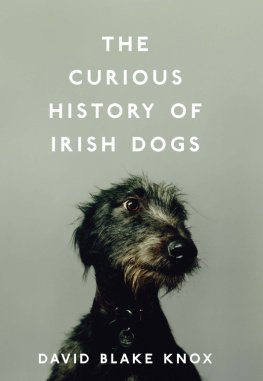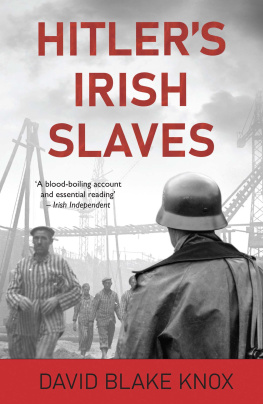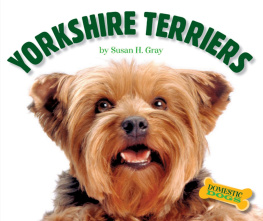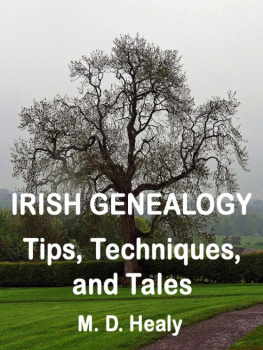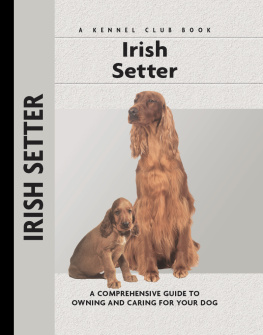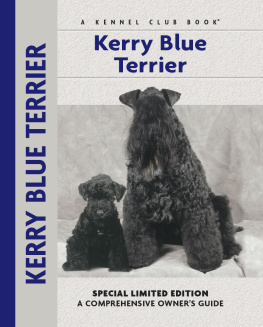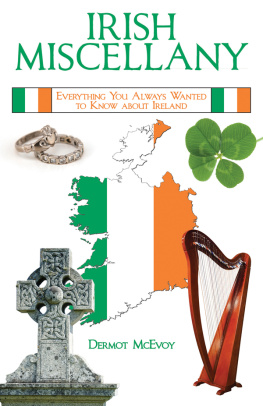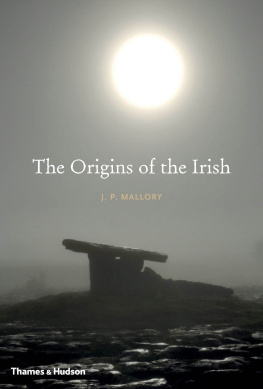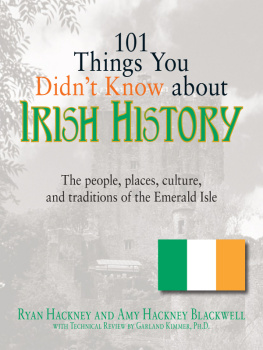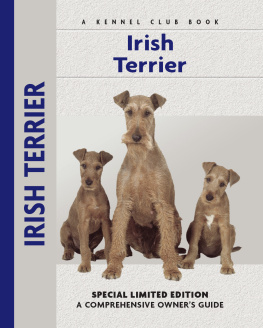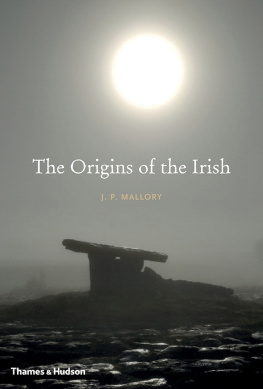The Curious History
of Irish Dogs
The Curious History of Irish Dogs
David Blake Knox
THE CURIOUS HISTORY OF IRISH DOGS
First published in 2017 by
New Island Books
16 Priory Hall Office Park
Stillorgan
County Dublin
Republic of Ireland
www.newisland.ie
Copyright David Blake Knox, 2017
The Author asserts his moral rights in accordance with the provisions of the Copyright and Related Rights Act, 2000.
PRINT ISBN:978-1-84840-587-5
EPUB ISBN:978-1-84840-588-2
MOBI ISBN:978-1-84840-589-9
All rights reserved. The material in this publication is protected by copyright law. Except as may be permitted by law, no part of the material may be reproduced (including by storage in a retrieval system) or transmitted in any form or by any means; adapted; rented or lent without the written permission of the copyright owner.
British Library Cataloguing Data.
A CIP catalogue record for this book is available from the British Library.
10 9 8 7 6 5 4 3 2 1
For Deborah Spillane,
who knows how to raise pups
of both the human and canine varieties.
Contents
Acknowledgements
First of all, I would like to acknowledge the assistance given to me in writing this book by the Irish Kennel Club, and in particular by its president, Sean Delmar, who was also kind enough to provide me with photos from the clubs archives. The club has a justified reputation not only for its professional expertise and high standards, but also for preserving its non-sectarian and inclusive character through dark periods in Irish history when that may have been difficult to maintain.
I am grateful to all those devoted owners who have spoken to me about their dogs, whether they are kept as family pets, or worked in the field, or exhibited in the show ring. I appreciate those who have given me permission to use pictures of their dogs, or have allowed me to take my own photos. In particular, I should like to thank Frank Hughes from County Tyrone, who provided a photo of his Wheaten Terrier pups; Evan and Bob Devlin, of the ODobhailien kennel in Minnesota, USA, for providing photos of their Red and White Setters; Klra Eichacker from the Czech Republic for her photo of Wheaten Terrier pups; Xaliburs Irish Wolfhounds, in Belgium, for the photo of a Wolfhound pup; Mike ODwyer and Mike Irving in County Tipperary for allowing me to use a photo and to photograph their Kerry Beagles; and finally Kenneth Kennedy, a champion breeder in County Wexford, who allowed us to photograph two of his litters, including some of the finest Irish Red Setter pups that I have ever seen.
I am also grateful to Professor Tom Inglis, who brought a sociologists perspective to our stimulating discussions about the role played by dogs in Ireland over the centuries. I must also mention Toms Wheaten Terrier, Pepe: a beautiful and sweet-natured bitch whom I have known for almost two decades, and whose picture is included in this book. I am grateful to Dr Michael Cussen, who read some of the early chapters, and whose critical comments were, as usual, much appreciated. I am grateful to my friend Maurice Earls, from the Dublin Review of Books , who brought a historians eye to bear, and who was also most encouraging. I should like to thank Roisn Scully, who read some of the early drafts and gave her informed opinion.
I am grateful to all my children for their advice and support over the years. They have grown up with dogs, and have often recommended articles and books for my attention. My daughter Sarah, in particular, proved indispensable in tracking down rare archive prints and photos, and liaising with owners in Ireland and beyond. She also took some of the photos included in this book. Her mother, Deborah Spillane, has a wonderful understanding of canine psychology, and also knows how to care for dogs properly.
Finally, I would like to record my thanks to all those at New Island for their advice and enthusiasm. In particular, I should like to thank Edwin Higel, Dan Bolger and Justin Corfield for all their valuable suggestions and support. It should go without saying that the responsibility for any errors which the text may contain rests with me.
The book that follows is about Irish dogsor, to be more precise, about Irelands native canine breeds. As it happens, the majority of dogs currently living on this island do not belong to any of those breeds. However, this book is focused on the dogs that have been recognised for many years as native to this country. I hope it will show that the histories of those breeds also reveal a good deal about the human beings with whom they have shared the island.
Introduction
The Eikon Centre near Belfast has been described as the pinnacle of Northern Irelands exhibition industry. I dont know what the competition was like, but the Eikon is certainly one of the largest buildings of its kind on the island of Ireland, with more than 5,000 square metres of space that can be used to accommodate a range of trade events, product launches, conferences and livestock shows. It is, in effect, a huge warehouse that stands like a concrete island bordered on all sides by vast expanses of tarmac parking lotsmost of which were occupied on the day I visited the centre.
I had come to attend the Bangor and North Down Combined Canine Club 13 th All-Breed Championship Dog Show, to give its full title, which was the clubs biggest event to date. Over 1,000 dogs were being exhibited, representing more than 170 different breeds. Inside, the centre was full to capacity, and the show rings spilled out to include a grassy area beside the main hall, where the setters, retrievers and other gun dogs were being shown. It was impossible not to be impressed by the huge variety of breeds that were being exhibitedeverything from the pocket-sized short-coated Chihuahuas to the huge Bernese Mountain Dogs. Most of them were familiar to me, but there were some that I had never seen before, such as the Black Russian Terrier (which is not really a terrier at all); the Havanese (the favourite dog of Charles Dickens); and the Keeshond (which, it seems, is also known as the Smiling Dutchman).
Inside the centre, there were the usual fevered attempts by owners to make last-minute adjustments to the styling and presentation of their dogs. One of my daughters was with me, and as we passed one adorable Bedlington Terrier bitch, she could not resist petting her. Dont do that! snapped the owner. He whipped out a grooming comb and immediately began to tease the little dogs coat back into shape. My daughter looked as though she wanted the ground to open up and swallow her.
As we walked from one ring to another, it was clear that owners had come to the show from every corner of Ireland. What was equally clear was the pride that each took in their own particular breed of dog. When I commented on the similarities in appearance between the purebred Wheaten Terrier and the crossbred Labradoodle, one owner was quick to inform me that the two dogs were quite different. The Wheaten may look a little like that designer dog, she sniffed, but they have very different coats. Besides, the Wheaten is a terrier, and has all of a proper terriers instincts. Of course, she was right. The coat of the Wheaten is soft and flowing, while the Labradoodle usually has an abundance of tight curls. In any case, appearance has never been the sole determining feature of any dog breed, and whatever else they might be, Labradoodles are not terriers.

